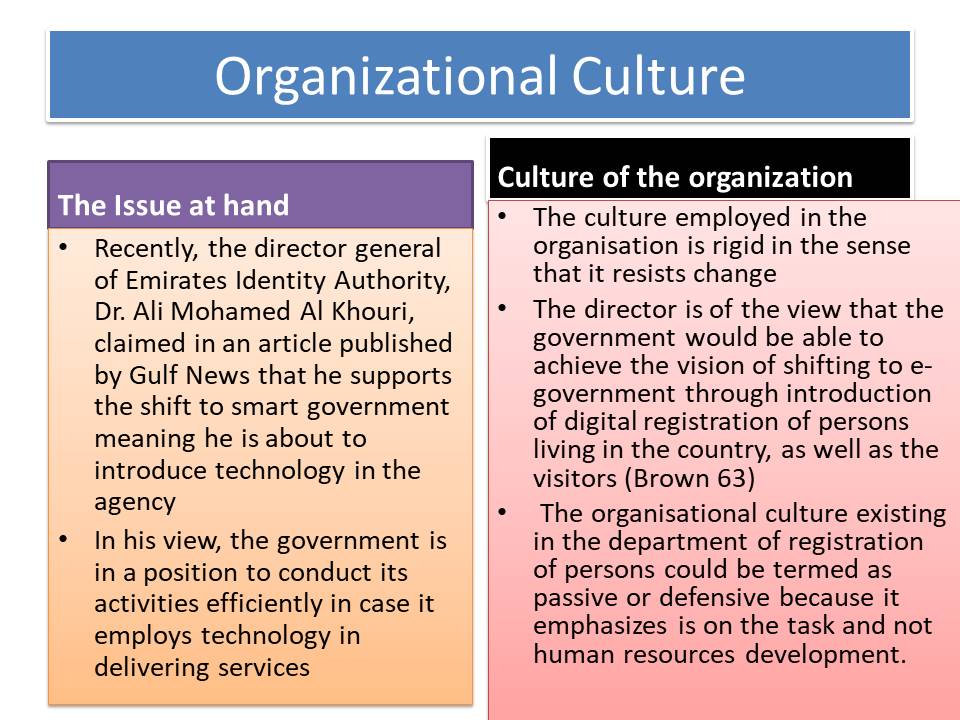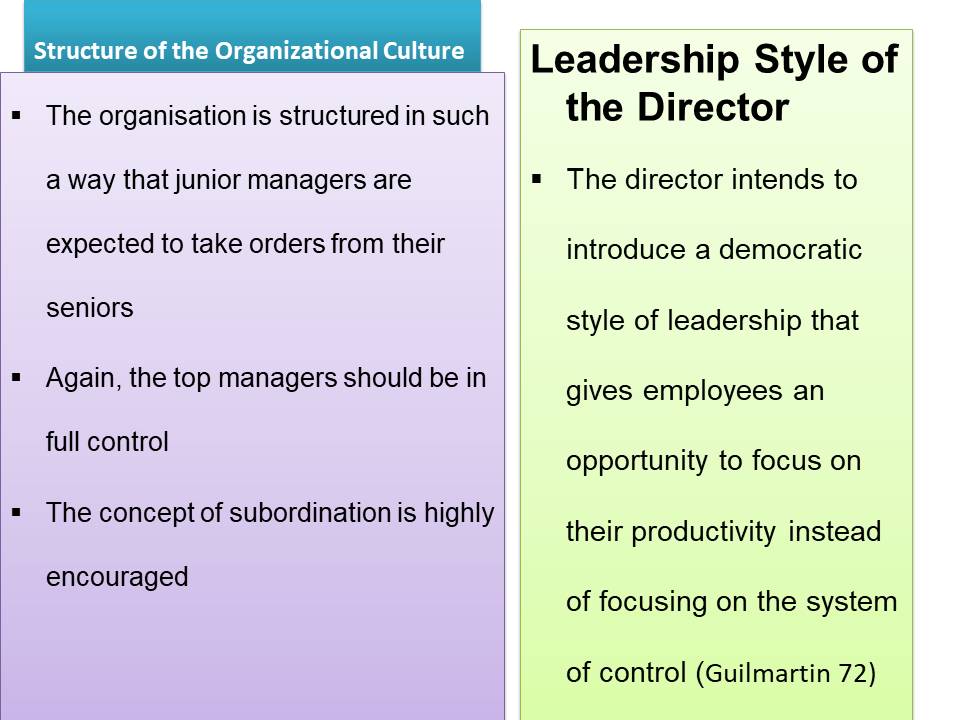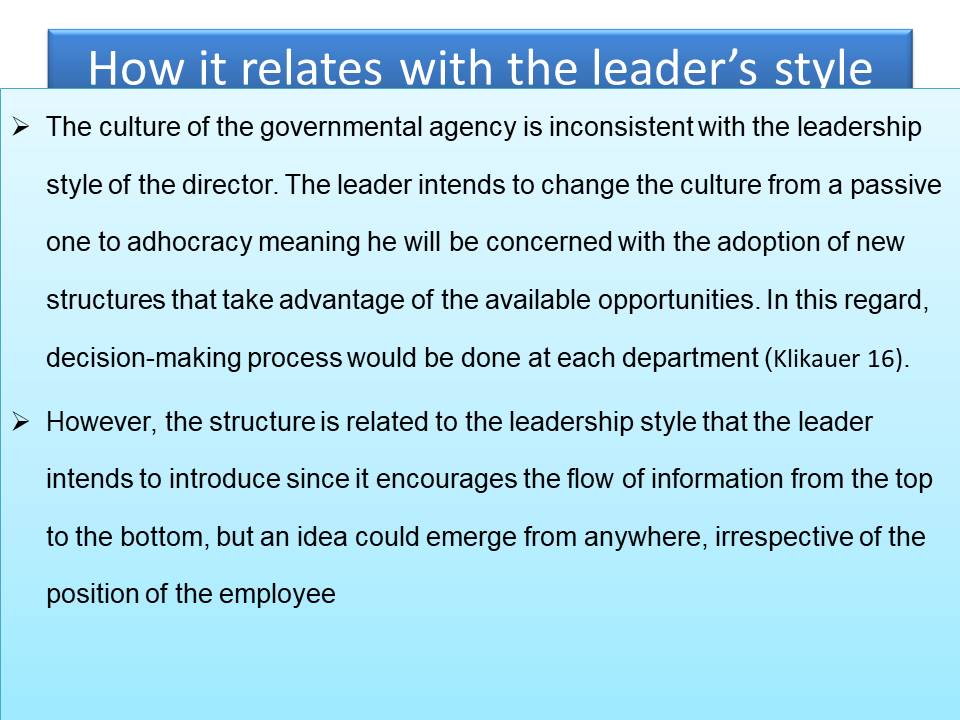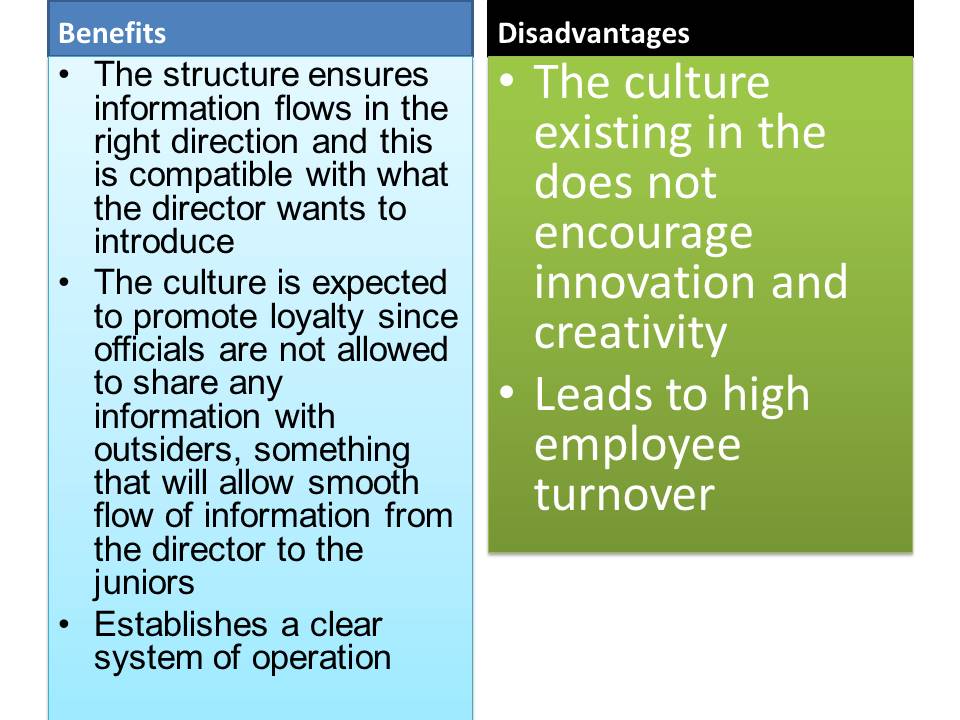Organizational Culture
The Issue at hand
- Recently, the director general of Emirates Identity Authority, Dr. Ali Mohamed Al Khouri, claimed in an article published by Gulf News that he supports the shift to smart. government meaning he is about to introduce technology in the agency.
- In his view, the government is in a position to conduct its activities efficiently in case it employs technology in delivering services.
Culture of the organization
- The culture employed in the organisation is rigid in the sense that it resists change.
- The director is of the view that the government would be able to achieve the vision of shifting to e-government through introduction of digital registration of persons living in the country, as well as the visitors (Brown 63).
- The organisational culture existing in the department of registration of persons could be termed as passive or defensive because it emphasizes is on the task and not human resources development.

Structure of the Organizational Culture
- The organisation is structured in such a way that junior managers are expected to take orders from their seniors.
- Again, the top managers should be in full control.
- The concept of subordination is highly encouraged.
Leadership Style of the Director
The director intends to introduce a democratic style of leadership that gives employees an opportunity to focus on their productivity instead of focusing on the system of control (Guilmartin 72).

How it relates with the leader’s style
The culture of the governmental agency is inconsistent with the leadership style of the director. The leader intends to change the culture from a passive one to adhocracy meaning he will be concerned with the adoption of new structures that take advantage of the available opportunities. In this regard, decision-making process would be done at each department (Klikauer 16).
However, the structure is related to the leadership style that the leader intends to introduce since it encourages the flow of information from the top to the bottom, but an idea could emerge from anywhere, irrespective of the position of the employee.

Benefits
- The structure ensures information flows in the right direction and this is compatible with what the director wants to introduce.
- The culture is expected to promote loyalty since officials are not allowed to share any information with outsiders, something that will allow smooth flow of information from the director to the juniors.
- Establishes a clear system of operation.
Disadvantages
- The culture existing in the does not encourage innovation and creativity.
- Leads to high employee turnover.

Works Cited
Brown, Paul. “Having their backs: improving managers’ skills in developing others.” T+D 64.4 (2010): 60-64. Print.
Guilmartin, Newton. “Giving one pause: learn how cultivating humility can drive success, even in the most time, budget, and attention stressed workplaces.” T+D 64.3 (2010): 72-73. Print.
Klikauer, Thomas. Managerialism: A Critique of an Ideology . New York: McGraw-Hill/Irwin,2013. Print.